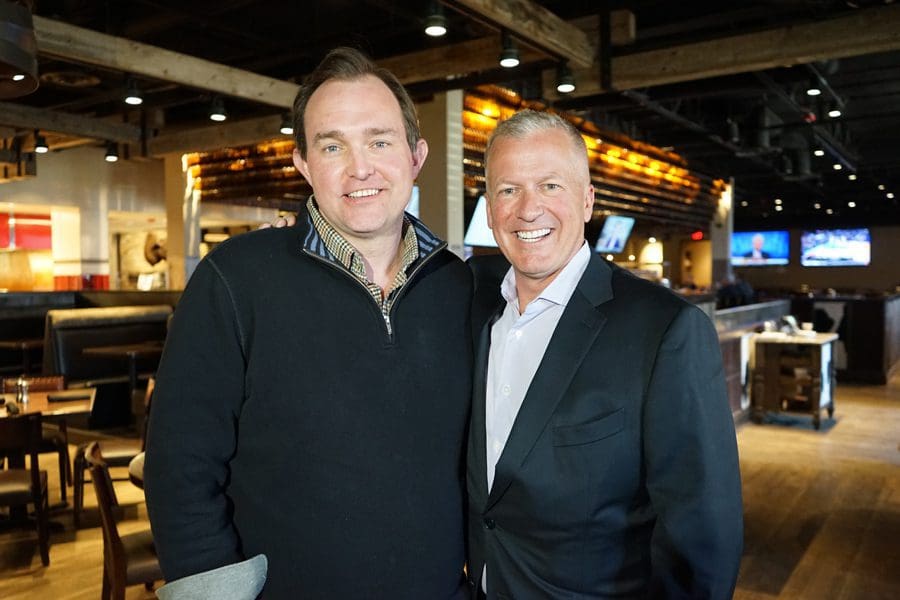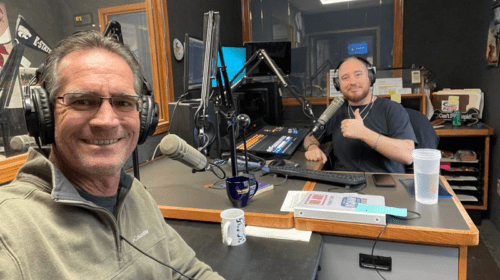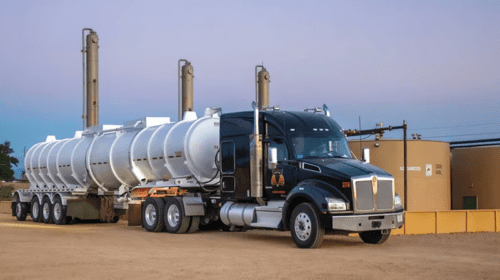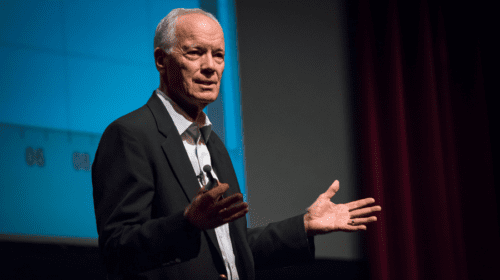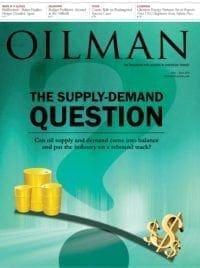For the network’s “Crude Reality: State of Pain” series, CNBC “Power Lunch” (M-F, 1PM-3PM ET) Co-Anchor Brian Sullivan and CNBC Special Correspondent Scott Cohn will visit states that once benefited from the country’s energy boom but are now finding themselves in a downturn due to the fall in oil prices. Over the next month, Sullivan and Cohn will travel to North Dakota, Alaska, New Mexico and Louisiana to talk with local businesses to see how they are handling the hard times and what they have planned for months and years ahead.
Brian Sullivan, “Power Lunch” Co-Anchor
Brian Sullivan is co-anchor of CNBC’s “Power Lunch” (M-F, 1PM-3PM ET) and the host of “Talking Numbers.” He also writes for CNBC.com and the recently re-launched CNBC PRO.
He joined CNBC in May 2011 and is based at the network’s Global Headquarters in Englewood Cliffs, NJ. Sullivan has more than 15 years of financial broadcasting experience, having served as an anchor at Fox Business Network and prior to that as producer, reporter and anchor at Bloomberg Television.
He has twice been nominated for the prestigious Loeb Award. One for being recognized as among the first financial journalists to highlight the risks of the housing bubble in 2007, and the other for the 2013 CNBC documentary “America’s Gun: The Rise of the AR-15.”
Prior to joining Bloomberg in 1997, Sullivan traded chemical commodities for Mitsubishi International.
Sullivan has a B.A. in political science from Virginia Tech and a law degree from Brooklyn Law School. In 2015, he began a three-year term on the Alumni Board of Virginia Tech.
In his free time he is an avid race car driver with two SCCA divisional championships.
Follow Brian Sullivan on Twitter @SullyCNBC.
Jason Spiess: Just so we can get some context for the interview. Tell me about your first trip to the Bakken oil fields in North Dakota.
Brian Sullivan: First trip to North Dakota was 2013 when things were really heating up. We wanted to go see how Williston and the Bakken region was dealing with the boom. I’ve been through this business enough to have seen some booms, like the Internet boom. Sadly I’ve been doing this now for over 20 years in financial journalism.
I wanted to see how they dealt with the boom and met some key players and spoke to some locals. It was a classic growth story of ‘we can find enough of this’ or ‘find enough of that’. I’ll never forget one of the cool anecdotes from that Bakken trip, I stayed at this hotel, which you’ll have to forgive me because I forgot the name, but now it is a Ramada. I think it was sold (after that Bakken trip). Anyway, it was on a dirt road because the hotel developer wanted to put the thing up but the town was slower than the developers because there was so much growth happening. So I have this rental car on sort of driving on this dirt driveway. (laughs)
This was a brand new hotel and it was nice, but it was also like $400-a-night. I was shocked by not only the level of growth, but the level of cost. How much everything cost. It was just shocking. We were up there for about 2 days, then we came back to the studio and returned to the oil fields in December of 2014.
JS: About June 2014 oil started hovering around $60 and the trend was showing a declining future rather than a rebound back to $100. Oil companies started talking about future adjustments. I attended several annual meetings in October of 2014 and state officials and oil executives started giving an ominous warning about the upcoming year. When you went out to visit the shale plays across America, specifically in December of 2014, you were in the Bakken. Was it still dirt roads and $400-a-night hotel rooms?
BS: (Laughs) You’re right, the price of oil had come down very dramatically, very quickly, starting in October so that’s why we wanted to get back out to the shale plays. This really isn’t a complicated story global in North Dakota, Texas, no matter where you are, just look at the production numbers and the demand numbers and you see that the world has too much oil. Hard to believe, you know Peak Oil just decades ago and now too much oil. We went there to see what the follow up was. Things were still humming along because the price of oil had only been down for a couple of months. Everyone was fully committed. Contracts were in, drilling activity was high. We sat down and had dinner with a bunch of locals and various businesses and it was all very optimistic. As you can entrepreneurs would be. I think to be an entrepreneur you have to be an optimistic person.
But there was also a sense of – and I mean this with all respect because we met some very nice people up there – everyone said we are going to be fine, everything is going to be fine, it’s gonna recover, oil will bounce back. I wasn’t quite so sure. I’m just a journalist and you look at the numbers and I’m thinking that’s a lot of gap to try and make up in terms of oversupply.
Thing were still expensive. Hotels were in the $300 range. Couple of nice restaurants there. We’ve been to this place called The Williston Brewing Company all three times were were in the Bakken. Met the owner had him on the show. He’s a very successful entrepreneur in Minneapolis and other places. So we went there and the menus were expensive and crowded. They were still humming along because the price had just come down and there was a great expectation prices were going to recover very quickly. I also remember it was negative 20 degrees. (laughs) I’ve never been so cold in my life, I grew up in Southern California.
So we visited them last week as part of our third stage of the “Crude Reality: State of Pain” series.
JS: Same question. What was it like this go around? Still $300 to $400 a night hotel rooms? What was the new normal?
BS: I paid $129-a-night this time and it was in the $300’s the last time I was there. Here’s the weird irony, and this isn’t me saying this, this is the restaurant owners and others who live there, which is, the last two times I was there there was’t enough of anything. There wasn’t enough hotel rooms, there wasn’t enough restaurants, there wasn’t enough cranes for the oil rigs, there wasn’t enough of anything. Now there is suddenly too much of everything. And there’s too many hotel rooms, there’s too many restaurants. There’s something like 33 restaurants in Williston, North Dakota now, at least that’s what this restaurant owner Marcus Jundt told us. And there are new hotels opening up. So there’s a glut of rooms, a glut of hotels. We met a guy the first time we were there, really nice guy named Andy Njos, who owns Dakota West Crane Company. Him and his cousin started with one crane. They went down to Houston and drove this crane back. It took them like a week-and-a-half to drive this thing back. When I say a crane, I mean one of these giant cranes with 20 tires and go 50 mph max.
They got up to nine cranes. In fact they also went out to Columbia, South Carolina, and drove another crane back. Drove 45 mph from Columbia, South Carolina, to Williston, North Dakota, and it took him 16 days. Sixteen days. He had to stop and get permitted and the thing was slow, gas problems. And now he is down to four. From one to nine to four in the course of three years. And he’s had to lay people off, they’re a small business and family business, so they’re sort of struggling to try and keep things going.
So we went from not enough of anything to too much of everything. Here’s the sad reality of that type of world. Jason, if everybody is half full, they’re all doomed. So what’s going to happen is we are either going to see a recovery. The rooms get filled back up and the restaurants get filled back up and the apartments get filled back up. Or there is going to be a lot of closing stuff down. Because you need to have businesses 75% full to really stay in business. I don’t care what you are.
JS: I was just talking with Michael Houge, a real estate broker out of Minneapolis. He represents a number of investments in the Bakken and other shale plays. And what he was talking about was the drop in rents. From $3000 to $1000-to-$1500. But his point was not only is there a drop in rents, but there is a drop in occupancy. So the 75% projection is really a 25% projection and if you don’t start to see heads in the beds soon, you will begin to see bankruptcies and properties for sale. Did you see anything like this or hear any numbers along these lines?
BS: Oh yeah. Well listen there is a giant private equity firm called Kohlberg Kravis & Roberts , they are colloquially referred to as KKR, they are one of the biggest most established private equity firms of the world. The book and movie Barbarians at the Gate was about their takeover of Nabisco, and they built a giant apartment community in Williston. For them to go to Williston, North Dakota, number one says something. Right this is a firm that does $20 billion dollar deals. They went to Williston and built a giant apartment community and we went by there, and don’t quote any numbers on this because I didn’t have their numbers and they may have even sold the place by now, but the point is that giant New York private equity firm goes there and gets their real estate you know what handed to them. The other thing about when things are sitting empty that it isn’t good for crime. I mean it’s not good for anything right. Things start to look run down.
Again there people there are wonderful and we made some good friends. Williston is going to be fine long term, I want to make that point clear, Williston will continue to go on. But they went through this huge building boom and now they are going to have to experience things shutting down. You can not have that many restaurants in a town like that. You can’t have a half full restaurant. Nobody will make it, everyone will just kind of bleed along. So there is going to have to be a recovery period which you may know about this than I. I am not an oil and gas guy, I am just a financial journalist and TV anchor who like oil and gas and have been covering it for a while. That said. Even if the price of oil would recover to $100 tomorrow, are they going to get the people back? People left, they found other jobs. Or they didn’t and and are less willing to come back to Williston because they loss 15,000 people in the county in less than a year. I mean could they even get the rigs back up?
Jason Spiess is a multimedia journalist, entrepreneur and content consultant. Spiess has over 25 years of media experience in broadcasting, journalism, reporting and principal ownership in media companies. (Over 30 years experience if you count his adolescent years as a newspaper delivery boy learning the importance and logistics of daily distribution and monthly door-to-door bill collecting.) Spiess has worked in the areas of oil and gas, UAS and precision agriculture, health care, cannabis, agriculture, real estate, government affairs and economic development. Spiess is the host of two radio programs, Building the Bakken and Coffee & Capitalism, and three specialty programs, MonDak OilField Review, Corporate Ink and UnStuck, that carry a radio network that spans five states and two countries. Spiess is a North Dakota native and graduated from North Dakota State University.

